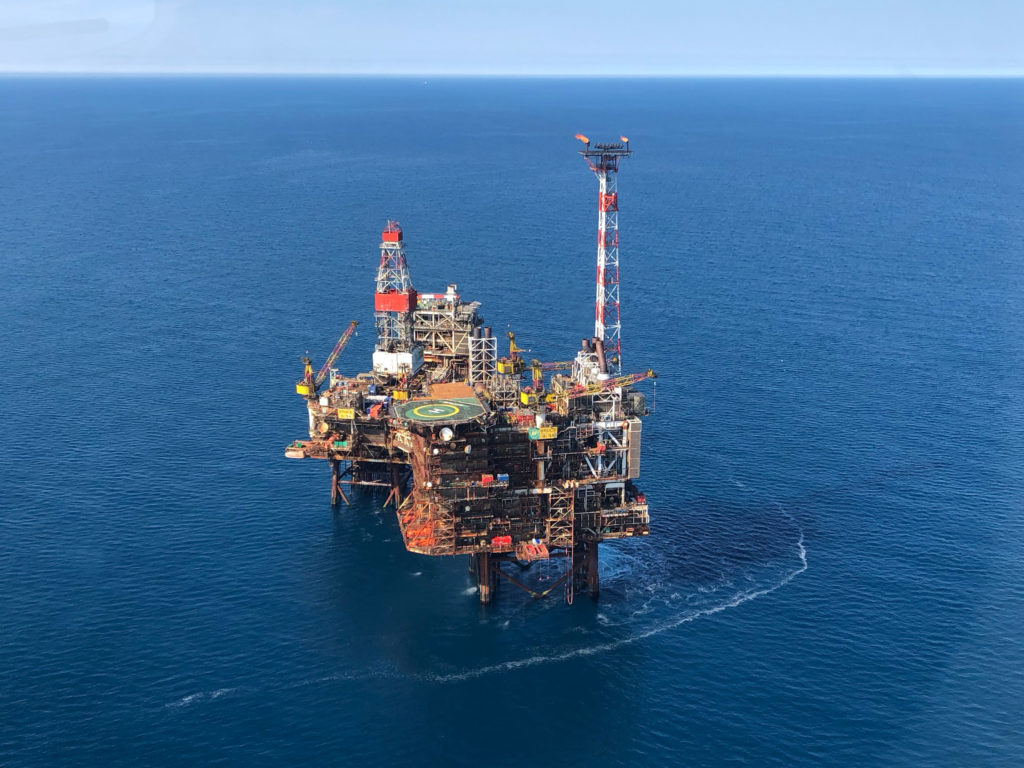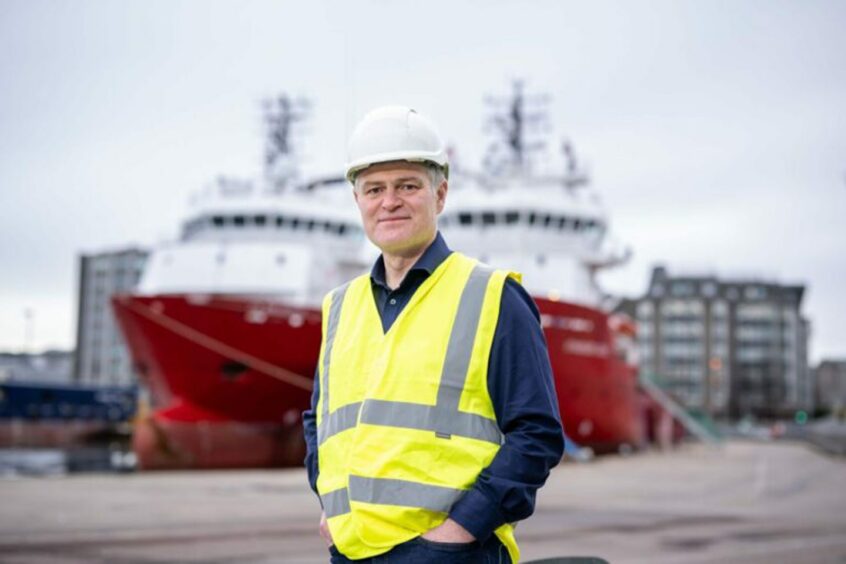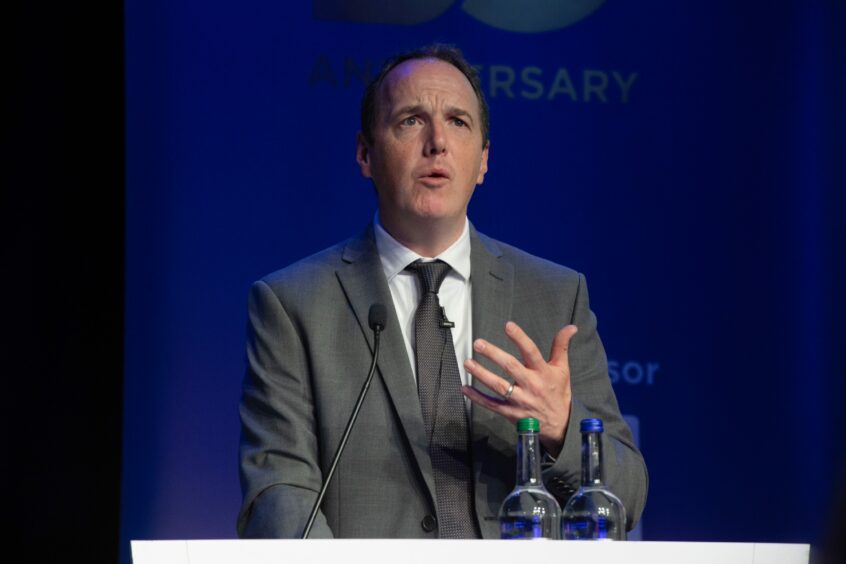
Industry and policy makers have a choice, either the UK North Sea faces a “premature end” or it could be a ” shining example of how to transition an oil and gas province into a clean energy super basin”.
These are the messages from the trade body Offshore Energies UK (OEUK) as well as the regulator, the North Sea Transition Authority (NSTA), as politicians and energy business leaders gather in Aberdeen to celebrate 60 years of North Sea oil and gas production on Tuesday, 17 September.
Attendees at the event, including UK energy minister Michael Shanks, will consider whether the basin can still write its “best chapter” – or face a sticky, sudden end.
New data has revealed the UK North Sea is cleaning up its act. OEUK said oil and gas operators are on track to achieve targets agreed with government for methane emission reduction seven years ahead of a 2030 deadline and have exceeded a target to reduce pollution from production emissions by 25%, four years ahead of schedule.
The trade body highlighted there are 13.5billion barrels of oil and gas still to be recovered from the North Sea but this was a “best case scenario”.
In the report, OEUK chief executive Dave Whitehouse said the UK North Sea is currently facing an “unnecessarily steep decline in production, which if unchecked will bring about a premature end to the life of assets”.
Production in 2023 has declined 11% year on-year, but this could trickle down a
further 50% over the next seven years, the report said.
Along with this are fears of job declines and in tax receipts – OEUK has previously estimated the UK government’s plans to raise the windfall tax on North Sea oil and gas firms could cause a £13 billion hit to the UK economy and destroy 35,000 jobs.
NSTA also recently confirmed operators of oil and gas platforms reduced the amount of green house gases (GHGs) emitted in 2023 by 4%, the fourth year in a row the industry has continued to clean up.
‘Tiring and overwhelming’
Stuart Payne, the chief executive of the NSTA, said challenges facing the industry “are real, they’re tiring and can feel overwhelming”.
In a statement sent to Energy Voice ahead of his speech in Aberdeen, he said: “If we get the transition wrong, the decline could be much more rapid.
“We know that means more imports to meet UK demand, in the case of gas with up to four times higher production and transport emissions for LNG,” he said.
“If we get it wrong it means a lost opportunity to decarbonise production, leaving only older, dirtier assets in the basin.
“And it means that world class supply chain dwindling or moving abroad, just at the time we need it to deliver the energy transition.”
But the head of the regulator also has reasons for optimism.
“If we can get this right however, then the UK can be a shining example of how to transition an oil and gas province into a clean energy super basin.
“If we get this right the next chapter of the North Sea can be its best chapter.”
Emissions Reduction Report
North Sea production will decline, but it depends on how fast it does so and whether the industry will survive enough to invest in the likes of offshore wind and and carbon capture and storage (CCS) – and if there will be workers still employed to deliver those new technologies.
Currently the decline in production means oil produced in the North Sea is actually more polluting – measured by carbon intensity.
Average carbon intensity in the North Sea was 21.40 kg/boe in 2023, up from 19.67 kg/boe the prior year. However, the average carbon intensity of producing a unit of gas in the UK remains around a quarter of the equivalent unit of imported LNG, with the UK importing 71% of total natural gas supply in 2023.
OEUK HSE and operations director Mark Wilson said the carbon intensity of all producing North Sea asserts would inevitably come down as newer production comes on board, some planning to draw electric power from shore or from offshore wind farms.
“If we can bring on some of the new developments in the pipeline, that will come down.”
He added that North Sea’s capacity to store 78 tons of carbon was is the equivalent of 200 years of current UK emissions.
He added: “It’s the opportunity that presents itself now and in the future.
“We would stress as well to maximise that opportunity we would of course require to see the right investment climate.”
Overall the UK upstream oil and gas industry emitted 13.5 million tonnes of
CO2 equivalent, representing roughly 3.5% of total UK territorial emissions.
OEUK said the industry has surpassed its emissions reduction target of 25% by 2027, four years earlier than was committed to through the North Sea Transition Deal, which outlines the offshore energy sector’s role in delivering UK net zero goals.
The methane emissions associated with upstream domestic oil and gas production reduced by 53% compared with the 2018 baseline, achieving the 50% 2030 target seven years ahead of schedule.
The trouble with methane
Reducing methane (CH4) is particularly important because it has over 80 times the global warming potential of CO2 in the comparatively short 20 years or so
it remains in the atmosphere before breaking down.
The regulator has been leading a crack down on flaring and venting, including punitive fines issued to transgressors and a 2030 target of zero routine flaring and venting (ZRFV).
The OEUK report highlighted how challenging meeting NSTA’s flaring ban might be. A case study on Serica (LON: SQZ) showed the introduction of cold restart procedures to warm up the line after a shut down on its Rhum field had “significantly” reduced, but did not eliminate, the need for flaring.
It added that there remain a “limited number of planned shutdowns” of North Sea assets due before the end of the decade to address flaring and venting.
Others operators that plan to continue production beyond 2030 are likely to use gas otherwise wasted in flaring as fuel for power generation, which requires modifying platform engines and turbines to run on gas.
Wilson estimated retrofit modifications could cost up to £40m to £60m on each platform.
Recommended for you


 © Supplied by OEUK
© Supplied by OEUK © DC Thomson
© DC Thomson © DC THOMSON
© DC THOMSON